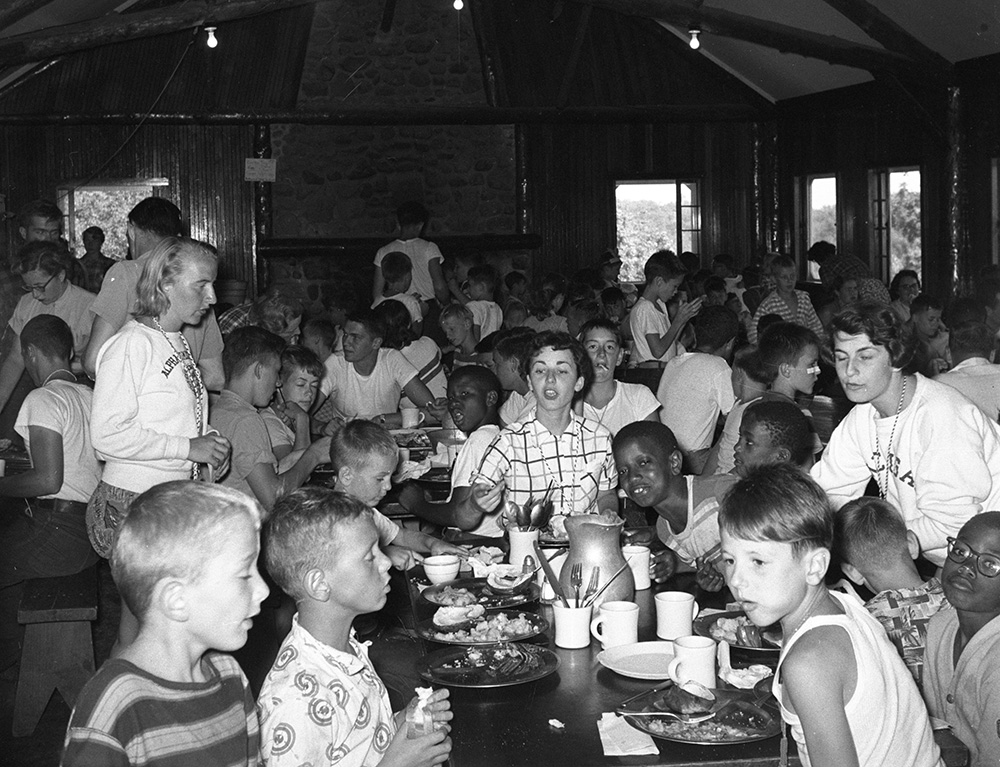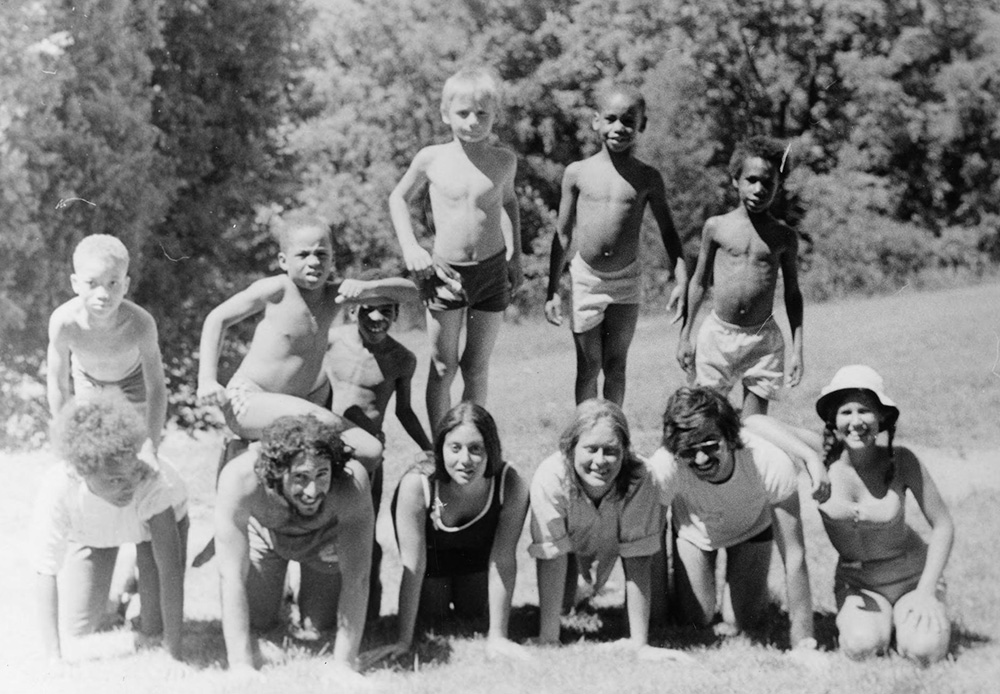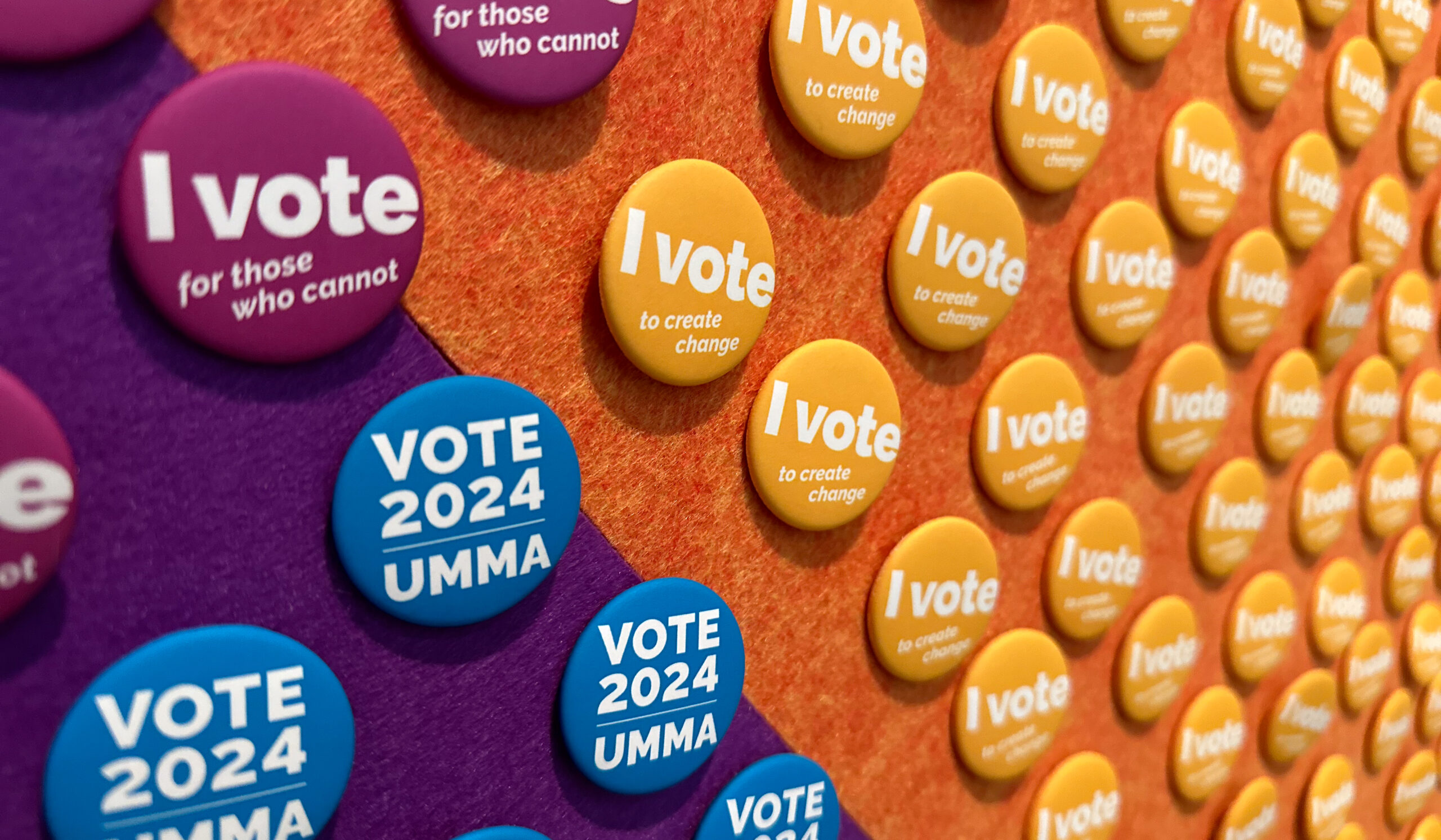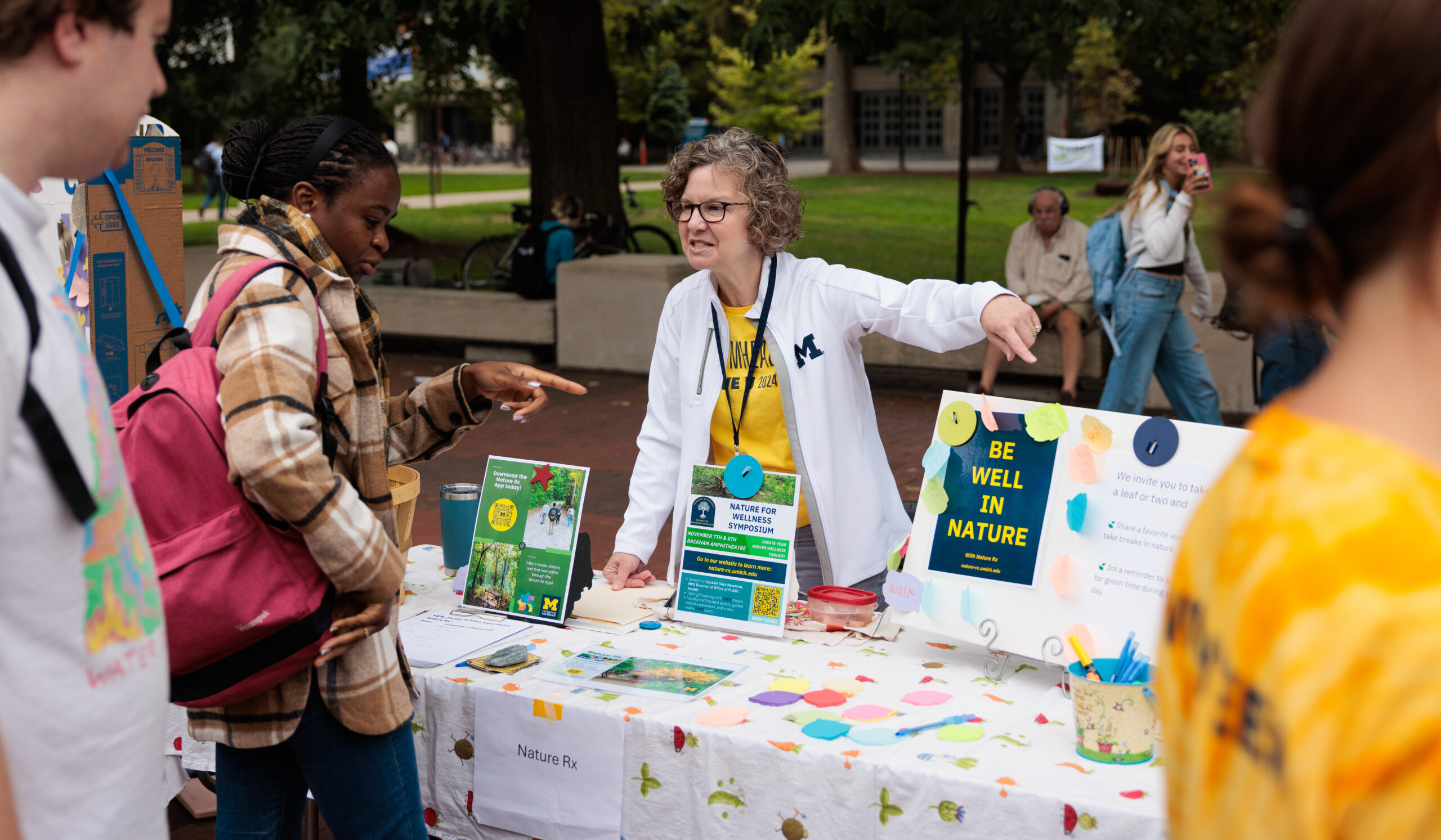“I made a collection of 51 insects and sold it for $10. One of the Detroit storekeepers wants to send me to some school to study insects. Can you tell me the right place?”
A 1921 letter written during the school year by a young attendee to a staff member gave testament to the impact of the inaugural summer session of the U-M Fresh Air Camp, hosted on Lake Huron. Co-founders Lewis C. Reimann, 1916, who acted as the first camp director, and Thomas S. Evans, of the Student Christian Association, sought to create a “happy playground” for boys “gathered from poor homes, the juvenile court, the detention home” and similarly challenged communities in Detroit. During that first season, 143 boys attended the camp during three 10-day sessions.

Photo courtesy of the U-M Bentley Historical Library
The mission behind the camp was twofold: allowing the boys to enjoy outdoor activities and learn valuable skills while giving the staffers educational experience—the counselors were U-M graduate students, and management consisted of national experts in psychology, education, and social work.
In 1924, donors gave the Fresh Air Camp a home on Patterson Lake near Pinckney, northwest of Ann Arbor. U-M began offering credit-granting summer courses for the student counselors in 1937. It was also in the 1930s that the camp’s purpose as a treatment option for delinquent boys solidified, guided by the findings of renowned psychologist and educator Fritz Redl. The Austrian immigrant—who worked at U-M and the Fresh Air Camp for a time after coming to the U.S. in 1936—aimed not just to treat behavior, but provide an environment of safety and healing. To that end, the great outdoors was preferable to a sterile office.
In 1944, control of the camp was given to the University’s Institute for Human Adjustment (now the Mary A. Rackham Institute). In the 1960s, the School of Education took it over and shifted the focus more toward aggressive delinquency.

Photo courtesy of the Ann Arbor District Library
“My first year as a counselor the camp brought in an entire gang of boys,” recalls retired family therapist Mary Whiteside, PhD’72, who was a Fresh Air counselor in the mid-1960s. “They escaped the first night of camp, which set the intense tone we were working in.” Episodes like that made for a learning experience, supported by the senior staff and supervisors.
Larry Perlman, ’64, worked the summer of 1965 as a graduate counselor. A practicing psychologist, he credits the experience with getting him started on a career of work with children. “The boys returned home as better people. The groundbreaking therapeutic approach by Redl and his colleague David Wineman, the Fresh Air director during my time, created a foundation for continued growth.” Wineman, MSW’49, served the camp in various capacities from 1950 to 1968.
“We got the best training anybody could have,” says Judie Lax, ’65, MA’66. “Counselors and experts came from all over the country, and the staff was like family.”
Whiteside—who met her husband, Jim, MA’72, PhD’77, as a fellow Fresh Air counselor—concurs. “My time there prepared me well not just for dealing with kids, but becoming comfortable with conflict, learning how to work with emotion to unpack incidents and reach mutual understanding.”

Photo courtesy of the U-M Bentley Historical Library
In the 1970s, the Fresh Air Camp became co-educational and shifted focus to children with mental disabilities. However, funding faded over the decade. Control of the Patterson Lake property moved to the University in 1980. For the next two decades, the grounds hosted meetings, professional retreats, classes, and research.
U-M intended to sell the property in 2005, but Doug Armstrong, MS’99—then a nurse and clinical research director at the U-M Transplant Center—sought a permanent home for an existing program that hosted summer camps for transplant recipients. Armstrong founded and became CEO of the nonprofit North Star Reach, which began leasing the old Fresh Air Camp grounds for $1 a year in 2011. North Star Reach began operations on Patterson Lake in 2016, reviving the “happy playground” for children with restrictive medical conditions and needs.
Gregory Lucas-Myers, ’10, is assistant editor of Michigan Alumnus.





